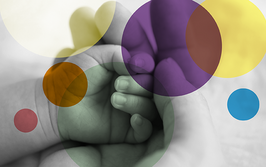Community Spirit and Patent Protection
Why the pharma industry and high tech sector should band together for the sake of innovation
Joerg Thomaier | | 6 min read | Opinion

When it comes to patents, there’s something the high-tech and pharmaceutical industries should agree on: how to stop the damage caused by patent assertion entities (PAEs).
PAEs – or “patent trolls” – are entities that acquire patents from sources, such as bankrupt businesses, and seek to sue for infringement of those patents without any intent to manufacture the patented product in question. The lawsuits, though sometimes frivolous, can cause significant financial harm to the targets – not to mention large opportunity costs when resources go against defending PAEs.
There’s a new way that businesses across industries can work together to protect their innovations from the negative impacts of PAEs. But first, for context, we should remember why the patent system was originally created: to stimulate and protect innovation. Indeed, the US Constitution includes a clause on patents and copyrights explicitly for that reason.
Everyone can get behind the need for patents – but different industries have diverse viewpoints on the value of those patents. Consumer tech offerings, such as cars or cell phones, have thousands of patents associated with a single product – all of which could be used to sue companies that employ the technology. Because of that risk, tech companies prefer a patent system that acknowledges only high-quality patents. In contrast, a new drug or biotechnology may have a single patent that, in many cases, represents literally billions of investment dollars, this counts for pharma but also other life sciences businesses. For pharma, a stronger patent system ensures that the key to their innovations is protected.
Because of this specific situation, the threat by PAEs was not prevalent in pharma or life sciences in the past. However, with the increasing digitalization of products and processes in our industry, as well as life sciences in general, these sectors are becoming more and more dependent on the high tech IP landscape – not only as creators and owners of such IP, but also as users of tech. Threats by PAEs apply here as with the other high-tech industries.
And that brings us to the difference in how high tech and pharma seek to protect their innovations and handle PAEs. In high tech, where thousands of patents may be involved with just one product, relevant patents are often owned by numerous patent holders and thus tend to be highly fluid transacted assets; for example, companies may sell them when they need to generate cash or as part of bankruptcy-related liquidation. At any given time, there are around 30,000 high-tech patents for sale.
Among the largest buyers of patents are – you guessed it – PAEs that partner with investors to sue high-tech players for infringement of their purchased patents. On average, the US sees about 2,400 new PAE high-tech lawsuits per year; in 2021, 87.2 percent of all patent litigation against high-tech companies were initiated by PAEs. But tech companies are creating much of the problem in the first place themselves, with 87 percent of all patents acquired by PAEs coming from operating businesses rather than individual inventors or universities.
High-tech companies which, as described earlier, includes more and more life science companies such as pharma, face financial risks from PAEs, and do what they can to improve the overall quality of patents with the hope of reducing the number of low-quality patents that can fall into the hands of PAEs and form the basis of these lawsuits. That includes, for example, pushing for changes to intellectual property rights laws, advocating for damages that are fair and appropriate in infringement cases, creating the inter partes reexamination (IPR) process, and so on. These practices may help some in the high-tech industry, but may also be viewed by other patent holders, such as individuals, universities, and pharmaceutical companies, as double-edged swords.
Why? Because pharmaceutical and life science companies depend on strong enforcement positions against their direct competitors, and everything that weakens the effectiveness of patents also negatively impacts pharma’s business – which is closely tied to the value of their patents. The pharma industry needs strong and enforceable rights. In other words, as the high-tech industry is addressing the problem of quality by pushing for injunctions to become rare instead of the rule, and replacing them by a “right to appropriate damages,” in an effort to address PAEs, this may have the have the unintended consequence of hurting the business of pharma companies. Pharma companies need strong patents that are entitled to injunctions – their legal right of exclusivity to enable their business. For our industry, damages would never be able to fill the gap. Thus, one industry’s effort to address quality is in conflict with another industry’s effort to have strong patents.
The irony? Though both high tech and pharma hate having to deal with PAEs and their impacts, the former’s way of stemming the damage creates eventually larger risks for the latter. So what’s the solution?
We know some things that don’t work. For example, simply telling high-tech businesses to stop selling patents isn’t viable because there are always businesses that need money or are in the bankruptcy process. Moreover, there is certain to be disagreement between tech players and pharmaceutical companies as to the benefits of further changes to the patent system.
Fortunately, there is another way; companies can join forces in structured communities to address the impact of PAEs and protect intellectual property. One such protective community is LOT Network, which includes large and small companies across various industries. How does it work? Community members agree that if – and only if – their patent assets fall into the hands of a PAE, they will grant a licence for that patent to fellow members, rendering them immune to a PAE lawsuit involving the patent in question. Notably, members retain all traditional uses of the patents in question, including selling them or even suing other members for infringement.
My company, Bayer, along with automotive icon Volkswagen are both members of LOT Network, and together, we are joined by many other high-tech firms who want the mutual protection of the community. More widespread membership in such communities would allow the high-tech industry to continue selling patents without concern for the damage caused by PAE lawsuits – all without negatively impacting the overall patent system for pharma companies and others.
If we all join forces, the world can have a strong patent system that does what it was always intended to do – protect innovation. In such a world, the tech industry wouldn’t have to waste money on trolls and pharma could more effectively deliver treatments for cancer and other life-threatening diseases with their intellectual property better protected. What a wonderful world that would be.
Since 2010, Joerg Thomaier has served as the Head of IP for the Bayer Group. In this position, he is responsible for all IP matters including patents, trademarks, licences and all related matters for the Bayer Group. Joerg studied Chemistry in Heidelberg, Freiburg, Utrecht (NL) and at the ETH Zurich (CH). After receiving his Ph.D., he joined Bayer in 1997 as a trainee in the Patent Department in Leverkusen. After receiving legal training, Joerg passed the European Qualifying Examination (EQE) at the European Patent Office in 2001 and became a qualified European patent attorney.



















